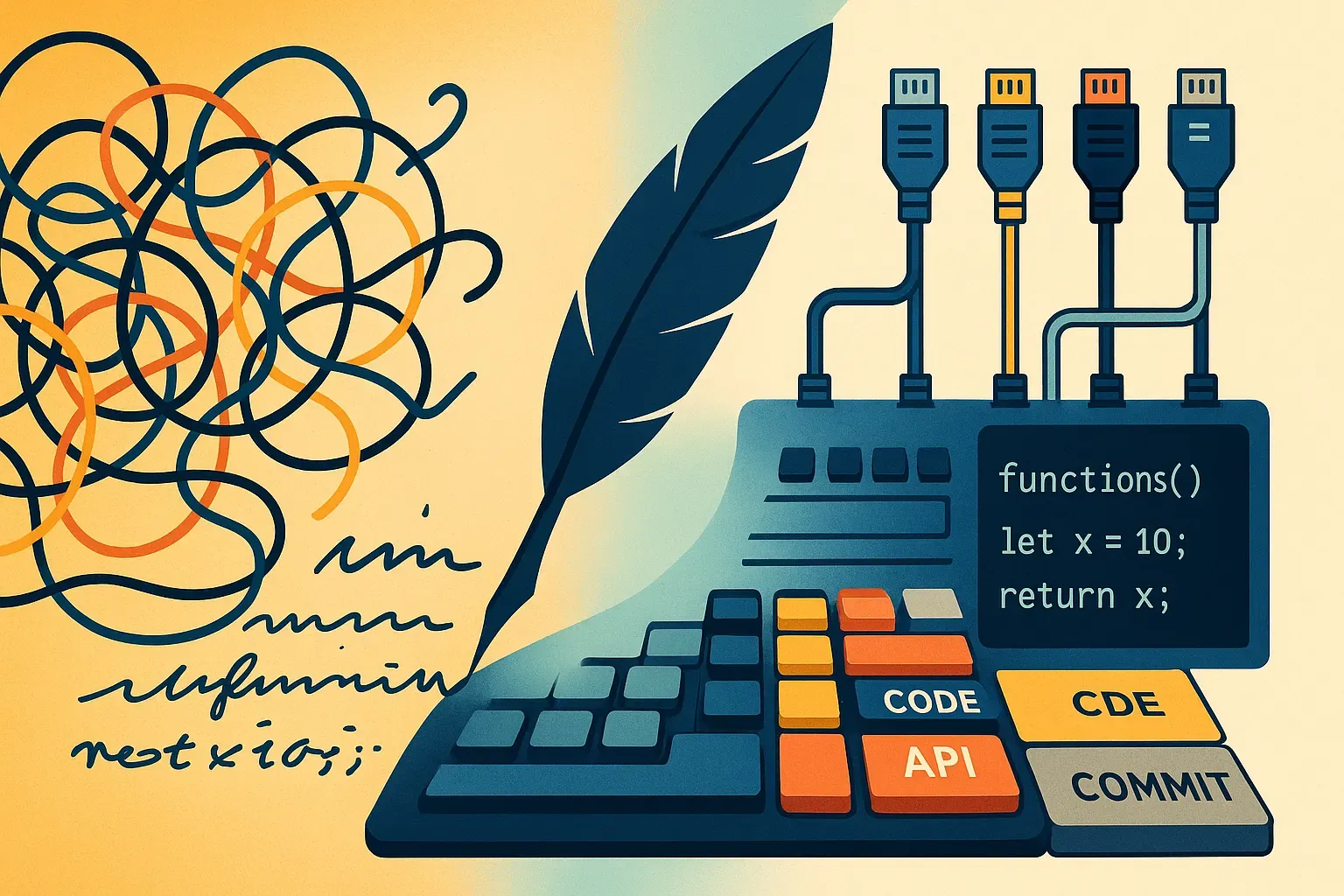
How to Write Commit Messages That Don't Suck: A Practical Guide
By Kevin Espiñeira on April 19, 2025
“Fix bug.” “Update.” “Changes.” If these look familiar, this post is for you. Let’s transform your Git commit messages from cryptic notes into valuable documentation.
Introduction: The Unsung Hero of Version Control
Git commit messages are one ofthe most undervalued forms of documentation in software development. Too often, they are rushed, vague, or uninformative. Yet, well-crafted commit messages are a goldmine. They tell the story of your project’s evolution, help teammates understand changes, speed up debugging, and make git blame a friend rather than a foe.
This guide provides practical tips and conventions to help you and your team write commit messages that are clear, concise, and genuinely useful.
Why Bother with Good Commit Messages?
Investing a few extra moments to write a good commit message pays off significantly:
- Improved Team Communication: Clear messages help everyone understand the what and why of changes without having to dig through code.
- Faster Code Reviews: A good summary in the commit message can provide context that speeds up the review process.
- Easier Debugging: When a bug is traced back to a specific commit, a descriptive message can instantly clarify the intent of the change, making it easier to identify the problem.
- Simplified Release Notes: Well-structured commits can often be used to auto-generate or easily compile release notes.
- Better
git logandgit blameOutput: Makes navigating project history and understanding contributions much more efficient. - Onboarding New Team Members: A clean commit history helps new developers get up to speed on the project’s lifecycle and past decisions.
The Anatomy of a Great Commit Message
A widely adopted convention for commit messages is to structure them with a subject line and an optional body.
1. The Subject Line (The “What”):
- Keep it Short: Aim for 50 characters or less. Many tools and UIs truncate longer subjects.
- Use Imperative Mood: Write as if giving a command (e.g., “Fix login bug,” not “Fixed login bug” or “Fixes login bug”). This is a Git convention.
- Capitalize the First Letter: Just like a sentence.
- No Period at the End: Another Git convention.
- Be Specific: Avoid generic terms. “Refactor user authentication module” is better than “Code cleanup.”
2. The Body (The “Why” and “How”):
- Separate from Subject with a Blank Line: This is crucial for
git logand other tools to parse correctly. - Explain the Problem: Why was this change necessary? What issue does it address?
- Describe the Solution: How was the problem solved? What approach was taken?
- Wrap Lines at 72 Characters: This improves readability in terminals and various Git tools.
- Use Bullet Points for Lists: If explaining multiple related changes or impacts.
- Reference Issue Trackers: If the commit relates to a specific ticket (e.g., “Closes #123”), include it. Many platforms will automatically link these.
Bad Examples (And How to Fix Them)
Let’s look at some common anti-patterns:
-
Bad:
Fix bug- Why it’s bad: Which bug? How was it fixed?
- Good:
Fix: Prevent null pointer exception in user profile save- `
- The user profile save operation could fail if the avatar field was empty,
- leading to a NullPointerException.
- This commit adds a null check before attempting to access avatar properties.
- Closes #452
- `
-
Bad:
Update code- Why it’s bad: Completely uninformative.
- Good:
Refactor: Simplify cart total calculation logic- `
- Replaced the iterative sum in
calculateCartTotalwith a more efficient - reduce function. This improves readability and slightly enhances performance
- for large carts.
- `
-
Bad:
Changes to CSS and JS for new feature X that PM asked for last minute- Why it’s bad: Too long for a subject, includes unnecessary chatter.
- Good:
Feat: Add dark mode toggle to user settings page- `
- Implements the dark mode feature requested by product management.
-
- Adds a toggle switch component to the user settings UI.
-
- Includes new CSS variables for dark theme colors.
-
- Updates JavaScript to handle theme switching and persistence in localStorage.
- Relates to TICKET-789
- `
Tips for Consistent, High-Quality Commits
- Commit Small, Logical Changes: Each commit should represent a single, atomic unit of work. This makes them easier to understand, review, and revert if necessary.
- Commit Often: Don’t wait until you have a mountain of changes to commit.
- Write Messages Before Committing Code (or as you go): This helps you think through the changes and ensures the message accurately reflects the work.
- Use a Linter/Formatter for Commit Messages: Tools like
commitlintcan help enforce conventions automatically. - Team Agreement: Discuss and agree on commit message conventions as a team. Document them!
- Review Commit Messages During Code Reviews: Make it part of your standard review process.
Conclusion: Your Commits Are Your Project’s Diary
Treat your commit messages with the respect they deserve. They are not just a hoop to jump through; they are a vital part of your project’s history and a powerful tool for your team. By adopting clear, consistent, and informative commit message practices, you contribute to a more maintainable, understandable, and collaborative codebase.
What are your favorite commit message tips or pet peeves? Share them in the comments!